Streamlining and empowering our teams with efficient collaboration and improved project outcomes using BIM workflows.
As space exploration continues to advance, the concept of establishing a human presence on Mars is becoming increasingly feasible. However, with this ambition comes a multitude of challenges, including the design and construction of suitable habitats for astronauts to live and work in. A group of designers, architects, and engineers have come together to tackle this issue and create a collaborative project focused on Mars habitats, specifically related to recreational use. The main idea behind the project is to create an interconnecting modular pod system that not only caters to realistic construction aspects but also streamlines the design workflow. Each group member can work independently and in the cloud through speckle utilizing web hooks. This allows for a cohesive approach since all the aggregating pods are individual, yet they refer to the general master plan.
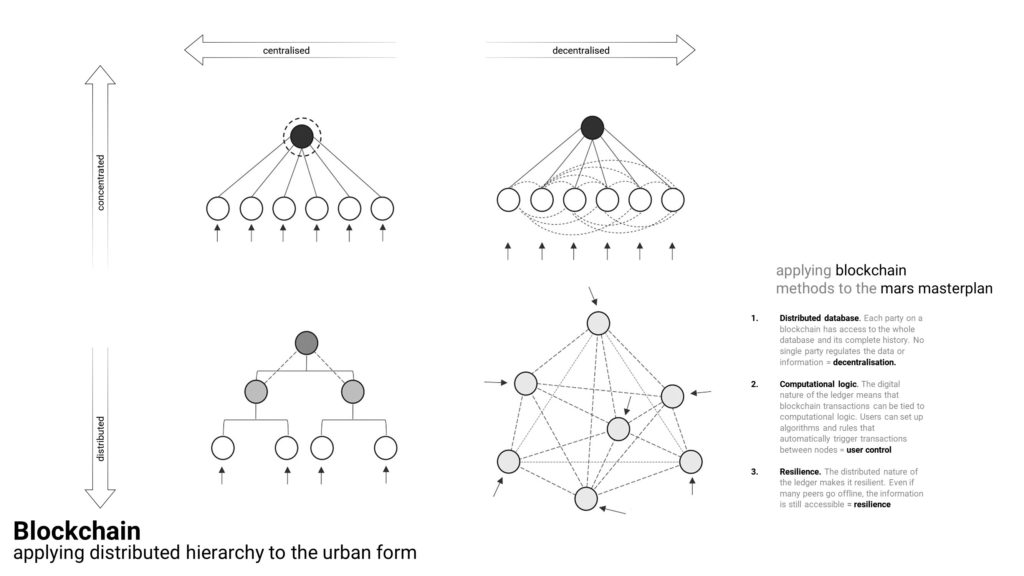
The overall master plan collaborative workflow starts with identifying the appropriate area for the master plan and then dividing it into individual neighborhoods, which are further divided into clusters. Each group takes ownership of one of the clusters and leads a specific use while defining its sub-cluster. The project workflow also involves deconstructing and rearranging the sub-clusters to form new mixed clusters, creating a more collaborative approach to the design process.
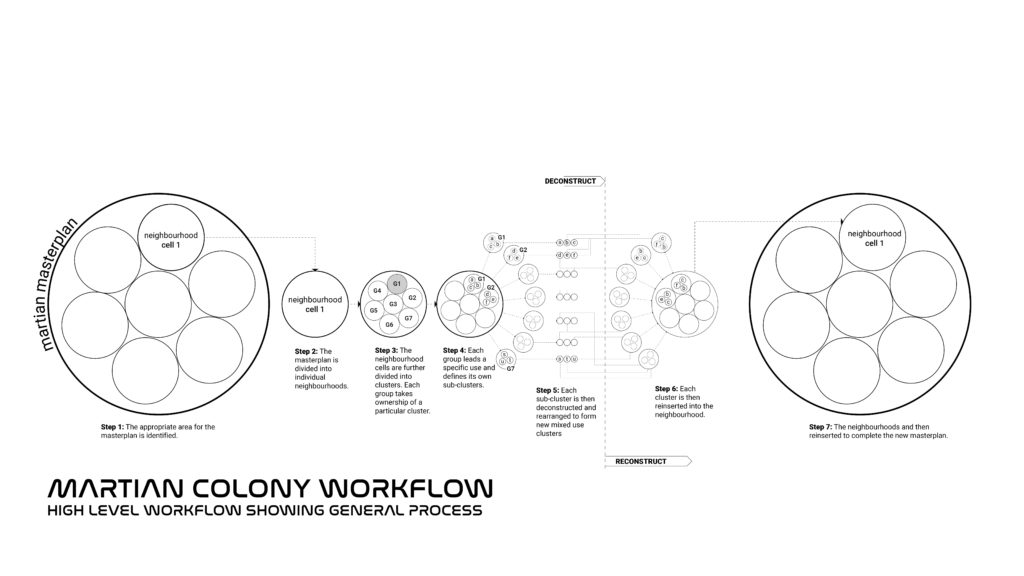
The illustration conceptualizes the entire process from start to finish, and it also takes input from outside sources such as structural, electrical, and mechanical engineers. The project workflow can be seen as a cog of parts interacting with each other, divided into different stages, including the master plan, conceptual design, detailed design, and rendering. The workflow is streamlined and visualized through a detailed speckle stream that pulls all the different groups’ geometry together into the overall master plan.
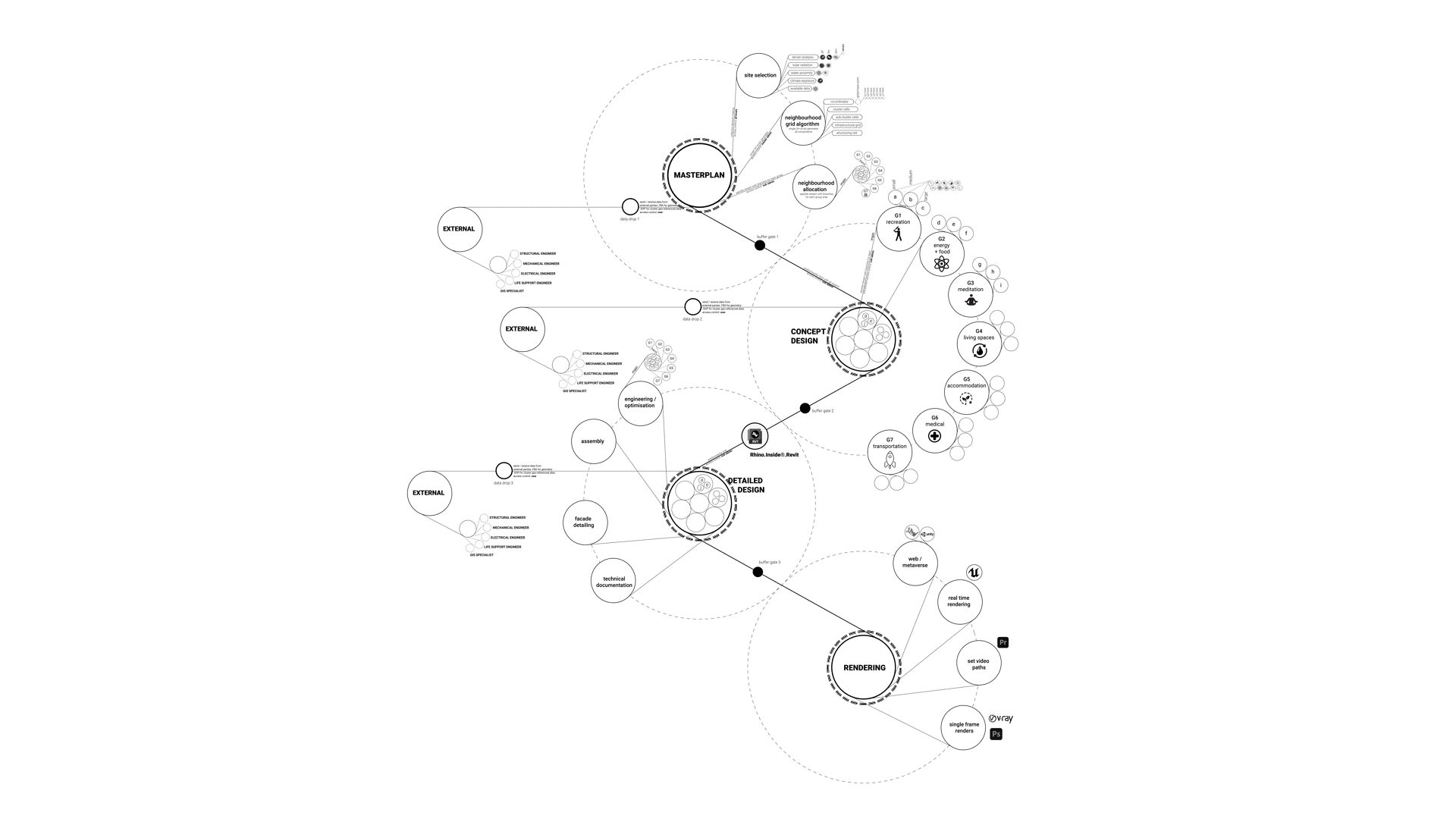
The project also includes what the team calls a “data drop,” which is an external share with bodies like structural, mechanical, electrical engineers in an IFC format. At each major stage, there is a buffer gate, which is a previous commit in case something goes wrong. Each stage’s data is stored as a retrievable point in time to ensure the smooth flow of the workflow.
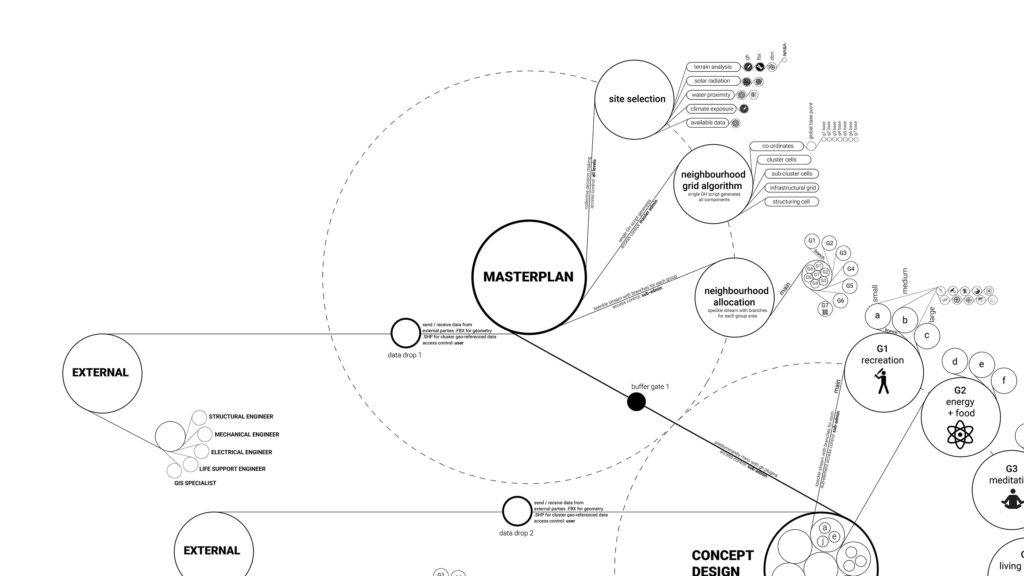

The speckle streams for the master planning process have been designed to be as simple as possible. Each group has a BIM coordinator, and the uploading and receiving process is simplified to ensure that the end-user or BIM coordinator only has to press a few buttons. Behind the scenes, there are quite a few complicated workloads, but the team has made the process as user-friendly as possible.
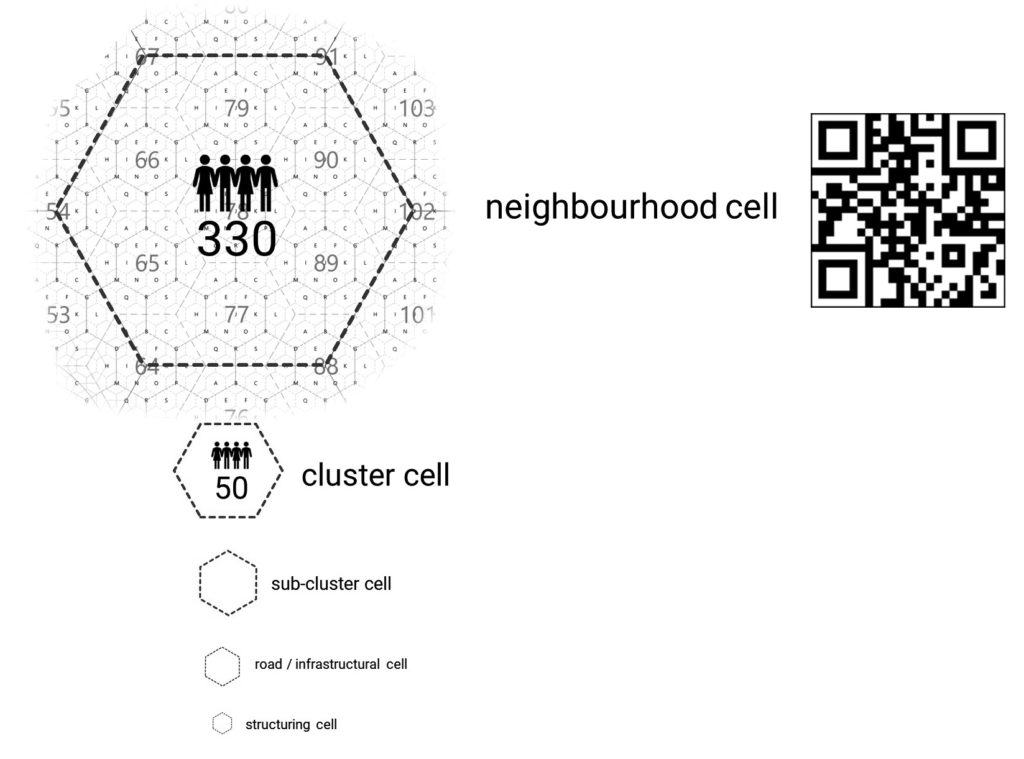
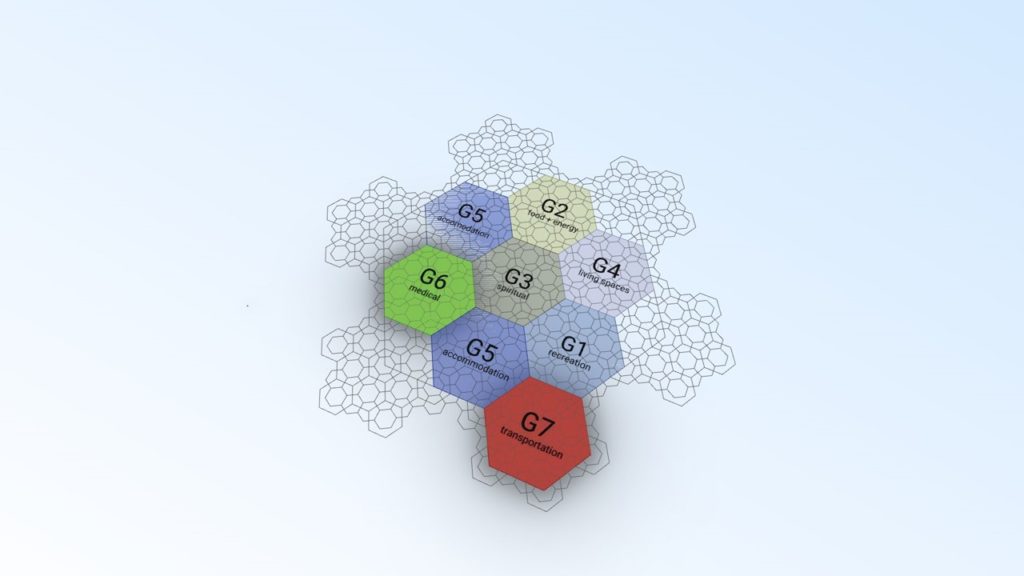
To showcase the flow of the project, the team utilized speckle from the master plan send definition, which sends them to a combined branch, with each group’s areas color-coordinated. Through speckle, they interchanged directives and conversed with Rhino insight to project documentation leading to the automating bot from fly.io servers, as seen in the gray zones that they interconnected.

The project also incorporates the use of webhook to cast inflatable mass components for inclined and vertical walls. The panels were created using two methodologies, one by phase using dynamo on the main geometry transferred by WallbyFace, and the other creating adaptive panels in Rhino-Inside directly. Despite the different methodologies, the output is almost identical, showcasing the versatility of the approach.
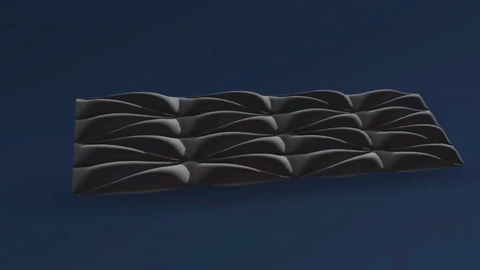

In conclusion, the Mars habitat recreational use collaborative project is an innovative approach to tackle the complex challenge of designing and constructing habitats for astronauts. The team’s streamlined workflow and collaboration methods provide an efficient and effective way to create a cohesive master plan. As space exploration continues to evolve, collaborative projects like these provide a glimpse into the future of space travel and human exploration.

